Table of contents
Icing sugar is often used for dusting baked goods and for making icing. Due to the manufacturing process, icing sugar is not raw. Available in organic quality.
Use in the kitchen
Finely ground crystal sugar (white, refined sugar), which has a consistency reminiscent of powder, is called icing sugar. White sugar, and hence also icing sugar, consists of sucrose, a disaccharide that is made up of one part glucose (glucose) and one part fructose (fructose). 1
What is the difference between powdered sugar and sugar? Powdered sugar tastes very sweet, just like granulated sugar. There is no difference in taste between white sugar and powdered sugar, but the powdery consistency of powdered sugar leads to a finer mouthfeel than granulated sugar with its noticeable crystals in the mouth.
Where is powdered sugar used? Powdered sugar is mainly used for decorative dusting of (vegan) baked goods and desserts and for preparing icing (powdered sugar glaze). It is used to decorate sweet pastries such as cakes (e.g. Bohemian apple cake with semolina, nuts and vanilla), fruit tarts, cookies (e.g. vanilla croissants, Spitzbuben), Berliners, waffles, strudel and Kaiserschmarrn. The icing mixed with powdered sugar and water is known on cakes (e.g. carrot cake, lemon cake, glazed apple cake), muffins, donuts, cream slices, cinnamon stars and cinnamon rolls or as "cement" in gingerbread houses. The glaze can be refined and coloured with a dash of lemon juice, orange juice or rum, but also with a little cocoa powder, coffee powder,vanilla or cinnamon.
Is there granulated sugar in raw food quality? No, the manufacturing process itself requires a lot of heat. Raw sugar is sugar that is not very purified and therefore has a brownish color. Neither granulated sugar, powdered sugar nor so-called raw sugar is raw in the sense of raw food. However, all three forms are probably available on the market in organic quality.
Since powdered sugar is granulated sugar, only finer, it can also be used as a sweetener. Crystal sugar and powdered sugar are interchangeable in most recipes without having to adjust the quantities (100 g of powdered sugar is 100 g of granulated sugar). It is suitable for baking and for sweetening creams, mousses, fillings and drinks. One advantage over granulated sugar is that powdered sugar dissolves much more quickly and can be worked into dough.
Icing sugar is also used to make marzipan and caramelize.
If possible, avoid (highly) sugary products or use them only sparingly. This also applies to sugar substitutes such as honey, agave syrup, maple syrup or rice syrup.
Powdered
How do you make your own powdered sugar? sugar is very easy to make yourself. All you need is granulated sugar and a stand mixer or coffee grinder. Put the granulated sugar in the food processor and grind until it has a powder-like consistency. You can also make powdered sugar with a mortar. However, this is a little more time-consuming and requires more strength.
If you want to store your homemade powdered sugar for a longer period of time, you can add some starch (e.g. corn starch). Starch prevents the powdered sugar from clumping.
Vegan recipe for marzipan with powdered sugar
Ingredients (for 4 servings): 90 g almonds (blanched and ground), 70 g powdered sugar (organic), 1½ tbsp water. Optional: ½ tsp almond extract, ½ tsp rose water.
Preparation: Put the ground almonds and powdered sugar in a blender/chopper. Mix briefly several times to ensure everything is well combined. Add water and optionally almond extract and rose water and mix until lumps of dough form. If the mixture does not hold together, gradually add a little more water. If the mixture is too moist and sticky, please add more ground almonds. Remove the lumps of dough, press them together to form a dough, knead on a surface for about 30 seconds and form into a roll. Wrap in cling film or something similar and store in the refrigerator. The vegan marzipan roll will keep for about two weeks. Marzipan paste is suitable for making chocolates, cakes, cookies or for decorating cakes.
Vegan recipes with powdered sugar can be found under the note: " Recipes that use the most of this ingredient ".
| Not only vegans or vegetarians should read this: Vegans often eat unhealthily. Avoidable nutritional errors. |
Purchasing - Storage Icing
sugar can be found in all supermarkets (such as Coop, Migros, Denner, Volg, Spar, Aldi, Lidl, Rewe, Edeka, Hofer, Billa) and in organic supermarkets ( Denn's Biomarkt, Alnatura), including organic quality. Health food stores, drugstores and online shops also offer (organic) icing sugar made from raw cane sugar.
Pure powdered sugar does not contain any additives, which means it clumps more quickly. To prevent this, some manufacturers add a separating agent/anti-caking agent in the form of calcium phosphate (E 341) to the powdered sugar (usually the sugar in cans).
The availability of powdered sugar varies depending on the size of the store, catchment area, etc. Our recorded food prices for the DA-CH countries can be found above under the ingredient image - and by clicking you can see their development at various suppliers.
Storage tips
If stored correctly, i.e. in a dry place, protected from light and cool (but not in the fridge), powdered sugar has an unlimited shelf life. Lumps formed by humidity can be turned back into powder by crushing or sieving.
Ingredients - Nutritional Values - Calories
What are the ingredients in powdered sugar? 100 g of pure powdered sugar consists of 100 g carbohydrates, of which 98 g are sugar. The energy content is 389 kcal per 100 g. 2
The nutritional content of powdered sugar is not significant. For example, it only contains 0.02 mgof riboflavin (vitamin B2) per 100g, which is 1% of the daily requirement. Corn syrup contains a similarly low amount. The sweetener carob powder contains significantly more riboflavin at 0.46 mg per 100g. 2
Powdered sugar also contains very little selenium (1% of the daily requirement) at 0.6 µg/100g. Maple syrup has just as little, as does honey at 0.8 µg/100g. Agave syrup has a little more at 1.7 and carob powder even covers 10% of the daily requirement at 5.3 µg/100g.
You can find the complete ingredients of powdered sugar, the coverage of the daily requirement and comparison values with other ingredients in our nutrient tables. In the article Nutrients explained you will get a detailed insight into the topic.
Health Effects
Free sugars (added sugars), such as granulated sugar and powdered sugar, can promote a positive energy balance. A positive energy balance is beneficial in underweight individuals to induce weight gain. However, when other options are available, the intake of free sugars is not considered an appropriate and healthy strategy for increasing calorie intake in individuals with inadequate energy intake. 3
Icing sugar has no health benefits - it is a nutrient-poor to nutrient-free source of calories. Occasionally and in small quantities, you can integrate icing sugar into a healthy diet as a luxury item. In large quantities, however, it can lead to a number of health problems (see the following chapter "Dangers - Intolerances - Side Effects").
Dangers - Intolerances - Side effects
Is powdered sugar healthy? High consumption of sugar ( white sugar, brown sugar, powdered sugar and other high-sugar sweeteners) is worrying as it is linked to poor nutritional quality and the risk of numerous non-communicable diseases such as obesity, cardiovascular disease, metabolic syndrome and type 2 diabetes. 3,4 Sugar can also be responsible for the onset and worsening of inflammation, according to a 2022 study. 4
An analysis of cohort studies in children suggested a positive association between free sugar intake and dental caries. There is evidence that caries rates are higher when free sugar intake accounts for more than 10% of total energy intake. Furthermore, three national population studies observed lower caries development when per capita sugar consumption was less than 10 kg/person/year (about 5% of total energy intake). 3 Results from a 2019 study suggest that the association between sugar consumption and caries is very low when careful tooth brushing with fluoridated toothpaste is present. 5
In addition, excessive consumption of sugar can over-trigger the reward system centered in the striatum (core area of the forebrain), which can lead to compulsive eating and reduced satiety signaling. 1 In both animals and humans, there are parallels with drugs and sugar in terms of brain neurochemistry and behavioral effects. 6
The relationship between dietary stress and attention deficit hyperactivity disorder (ADHD) has been investigated, and some studies have found that high sugar consumption has adverse effects on it. A 2019 study showed that sugar consumption was only associated with the prevalence of ADHD in boys aged 6 years. Sustained high consumption or an increase in sugar consumption between the ages of 6 and 11 was not associated with a higher incidence of ADHD. This supports the hypothesis that the higher sugar consumption of children with ADHD may be a consequence rather than a cause of the disorder. 7
For both adults and children, the World Health Organization ( WHO) strongly recommends reducing the intake of free sugars to less than 10% of total energy intake (approximately 50 g of sugar). The WHO suggests an additional reduction in the intake of free sugars to less than 5% of total energy intake. 3
Icing sugar has a moderate glycemic index of 65. 8
Folk medicine - natural healing
Sugar was considered a household remedy to speed up the healing of wounds. However, the use of granulated sugar and powdered sugar for wound healing is not recommended. 18
Ecological footprint - animal welfare
The ecological footprint of a food depends on various aspects, such as cultivation method (conventional/organic), seasonality, country of origin, transport and, if applicable, packaging. The CO 2 footprint of white sugar is, according to the Danish climate database The Big Climate Database, 2.41 kg CO 2 eq/kg in 2024 (2021: 2 kg CO 2 eq/kg). A German study from 2020 distinguishes between sugar from sugar beet and sugar from sugar cane, both from conventional and organic cultivation. Conventional beet sugar has a CO 2 footprint of 0.7 kg CO 2 eq/kg, that of organic beet sugar is 0.5 kg CO 2 eq/kg. Conventional cane sugar causes 1 kg CO 2 eq/kg, organic cane sugar 0.9 kg CO 2 eq/kg. 9,10 We found no values for the ecological footprint of powdered sugar in particular.
The water footprint of household sugar and consequently also of powdered sugar is relatively high. According to a Dutch study from 2011, a total of 1782 litres of water is needed to produce 1 kg of refined sugar. Sugar obtained from sugar beet has a smaller water footprint than sugar from sugar cane. 11
Local beet sugar is more environmentally friendly than (conventional and organic) sugar from South American sugar cane. The sugar yield from sugar beet is higher than that from sugar cane - sugar beet therefore requires less land to cultivate. Swiss sugar factories generally use more environmentally friendly energy sources for the energy-intensive sugar production than factories in South America. In addition, local beet sugar has to travel much shorter distances than overseas sugar. Local beet sugar is also preferable from a social point of view, as social problems in sugar cane cultivation in South America such as child labor, long working hours, a lack of occupational and health protection and corruption are well known. 12
It is best to use local organic sugar and organic powdered sugar, as organic farming avoids the use of chemical-synthetic pesticides that are harmful to the environment and health.
Worldwide occurrence - cultivation
The English word "sugar" has its origins in the Indian subcontinent. The Sanskrit word "sharkara", which describes the "gravel-like" nature of sugar, came with Alexander the Great (356-323 BC) via the Arabic word "sukkar" and eventually to Western European words such as "sucre" (French) and "azucar" (Spanish). The earliest recorded use of sugar products goes back even further, to the time of the agricultural revolution around 8000 BC. Sugar cane is said to have been one of the first domesticated crops. Nomads from Papua New Guinea were known to chew on raw sugar cane. 13
The attraction of sugar has evolutionary roots in the fruit-based diet of great apes. The natural sugars in fruits probably served as a cue to caloric density. 13
Industrial production
How is sugar produced? The production of refined sugar involves two main processes: processing sugar cane ( Saccharum officinarum) or sugar beet ( Beta vulgaris subsp. vulgaris, Altissima Group) into raw sugar, followed by processing the raw sugar into refined sugar. Juice is extracted from the crushed raw materials, which is heated, cleaned and filtered before it is crystallized to produce raw sugar. The raw sugar can then be refined into white sugar. 14,15 You can find more detailed information about the processes in the article " Sugar (granulated sugar, sucrose, saccharose) ".
Icing sugar is finely ground white sugar. It is available in different qualities (4X, 6X, 10X, 12X). 16
In confectioneries or bakeries, special powdered sugar is used for baked goods, dimensionally stable decorative powder (decorative snow) that does not melt and therefore does not tend to absorb water.
More information
The term sugar generally refers to the chemical compound sucrose, which plants produce through photosynthesis. Sucrose is a disaccharide consisting of one glucose and one fructose molecule linked by an ether bond. Cleavage of this bond by the enzyme sucrase-isomaltase is required for absorption. Expression of the enzyme has been demonstrated in the oral cavity in saliva, on taste receptor cells, and along the brush border of the duodenum and jejunum of the small intestine. After cleavage, various transporters on the apical membrane of the intestine absorb glucose and fructose. Glucose then enters the bloodstream, where hormones from the pancreas tightly regulate its concentration. Glucose is the primary source of energy for the central nervous system. It is stored in much smaller amounts as glycogen (the storage form of carbohydrates) than fats. Therefore, the body must continuously replenish glucose stores through gluconeogenesis (metabolic pathway for the synthesis of new glucose) or food intake. Fructose travels through the bloodstream to the liver, where the body subjects it to fructolysis, followed by gluconeogenesis or lipogenesis (synthesis and accumulation of depot fat in the form of triacylglycerides in adipose tissue / storage of unused food energy). 13
Alternative names
In Austria and southern Germany, powdered sugar is also called icing sugar. The term farin sugar or farinade is outdated and is derived from the French word farine for flour and the cohesive appearance of this sugar.
In English, powdered sugar is called powdered sugar.
Other applications
A study published in 2005 reported on a new technique for controlling Varroa mites ( Varroa destructor) in adult Western honey bees ( Apis mellifera). Adult honey bee colonies dusted with powdered sugar lost just over 75% of their mites, according to the study. 17
Bibliography - 18 Sources (Link to the evidence)
| 1. | Freeman CR, Zehra A et al. Impact of sugar on the body, brain, and behavior. Front Biosci (Landmark Ed). 2018;23(12):2255–2266. |
| 2. | USDA United States Department of Agriculture. |
| 3. | World Health Organization. Guideline: Sugars intake for adults and children. 2015. |
| 4. | Ma X, Nan F et al. Excessive intake of sugar: An accomplice of inflammation. Front Immunol. 2022;13:988481. |
| 5. | Van Loveren C. Sugar restriction for caries prevention: amount and frequency. Which is more important? Caries Res. 2019;53(2):168–175. |
| 6. | DiNicolantonio JJ, O’Keefe JH, Wilson WL. Sugar addiction: is it real? A narrative review. Br J Sports Med. 2018;52(14):910–913. |
| 7. | Del-Ponte B, Anselmi L et al. Sugar consumption and attention-deficit/hyperactivity disorder (Adhd): A birth cohort study. J Affect Disord. 2019;243:290–296. |
| 8. | Brouns F. Saccharide characteristics and their potential health effects in perspective. Front Nutr. 2020;7:75. |
| 9. | Concito. The Big Climata Database. Sugar, sucrose, white. |
| 10. | Reinhardt G, Gärtner S, Wagner T. Ökologische Fussabdrücke von Lebensmitteln und Gerichten in Deutschland. Institut für Energie- und Umweltforschung Heidelberg ifeu. 2020;1-22. |
| 11. | Mekonnen MM, Hoekstra AY. The green, blue and grey water footprint of crops and derived crop products. Hydrol. Earth Syst. Sci. 2011;15:1577–1600. |
| 12. | Biovision ch: Zucker für die Umwelt? 2020. |
| 13. | Liu WW, Bohórquez DV. The neural basis of sugar preference. Nat Rev Neurosci. 2022;23(10):584–595. |
| 14. | Singh R. Hybrid Membrane Systems – Applications and Case Studies. In: Singh R. Membrane Technology and Engineering for Water Purification (Second Edition). Application, Systems Design and Operation. 2015:179-281. |
| 15. | Sulzer Pumps. Principal Features of Centrifugal Pumps for Selected Applications. Centrifugal Pump Handbook (Third Edition). 2010:251-283. |
| 16. | Kemutec Schenk Process Group. Application Report Sugar Processing Solutions. 2021. |
| 17. | Aliano NP, Ellis MD. A strategy for using powdered sugar to reduce varroa populations in honey bee colonies. Journal of Apicultural Research. 2005;44(2):54–57. |
| 18. | Krankenhaushygiene de: Zucker zur Wundbehandlung. 2011. |

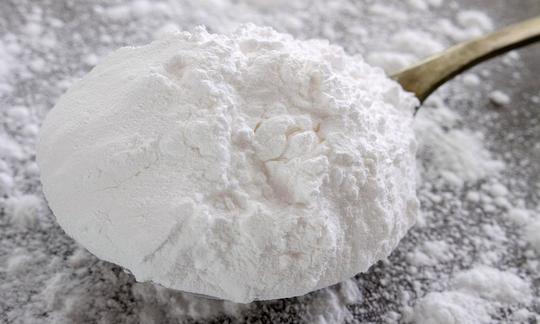

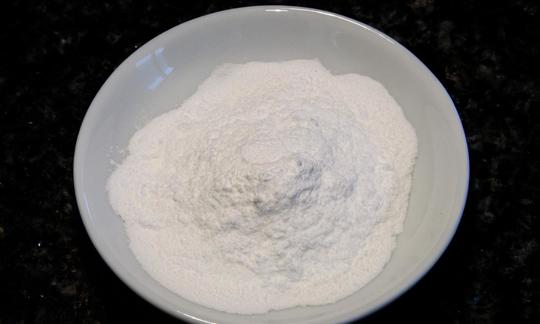

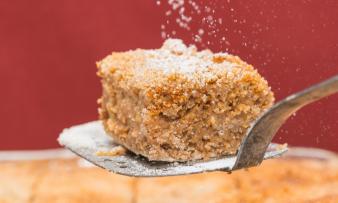
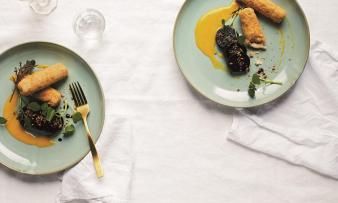
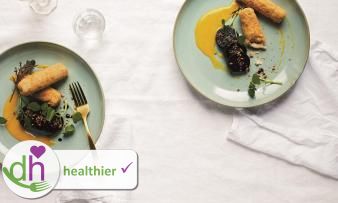

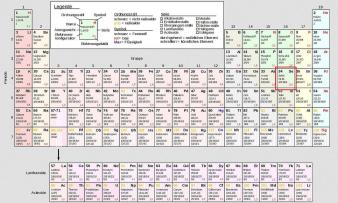
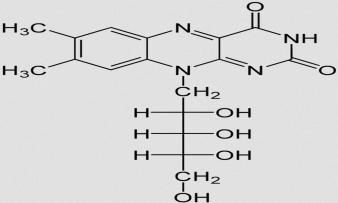


Comments